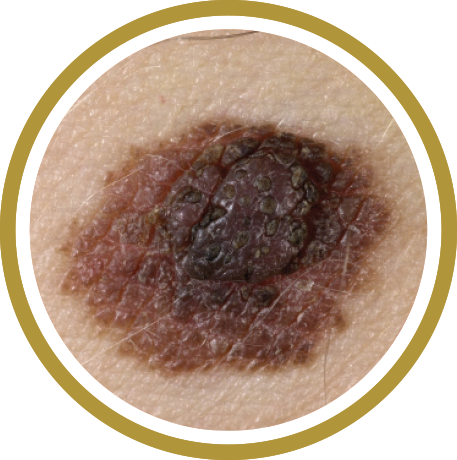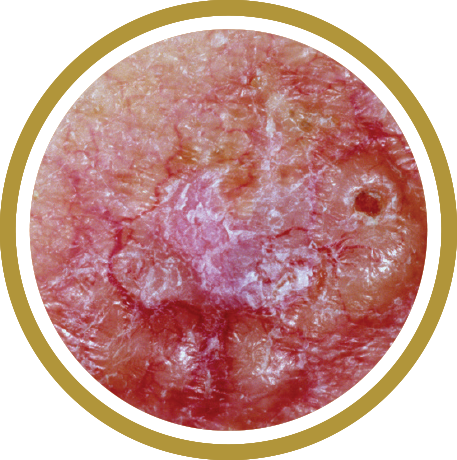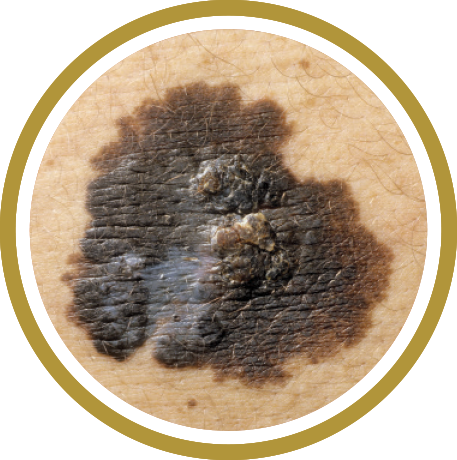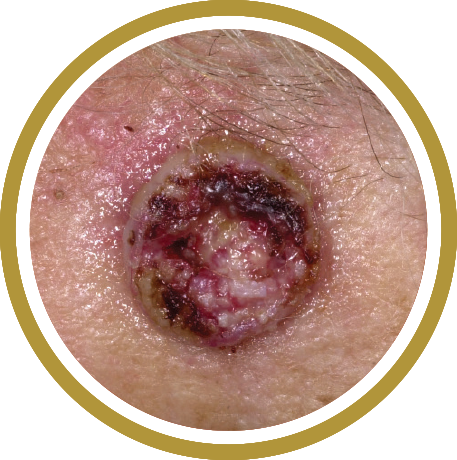Actinic Keratosis (AK)
Actinic keratosis (AK), also known as solar keratosis, is one of the most common precancerous lesions of the epidermis (outer layer of skin). It is caused by long-term exposure to sunlight.Chronic sunlight exposure alters the keratinocytes (cells that make up the majority of the epidermis) and causes areas of your skin to become scaly, rough, discolored, and sometimes tender to the touch. AKs grow slowly and are usually benign (non-cancerous).
Appearance
Look for areas of your skin that become scaly, rough, discolored, and sometimes tender to the touch.AKs are most commonly found on sun-exposed areas such as the face, lips, ears, neck, scalp, forearms, and backs of hands.
Learn how to examine your skin
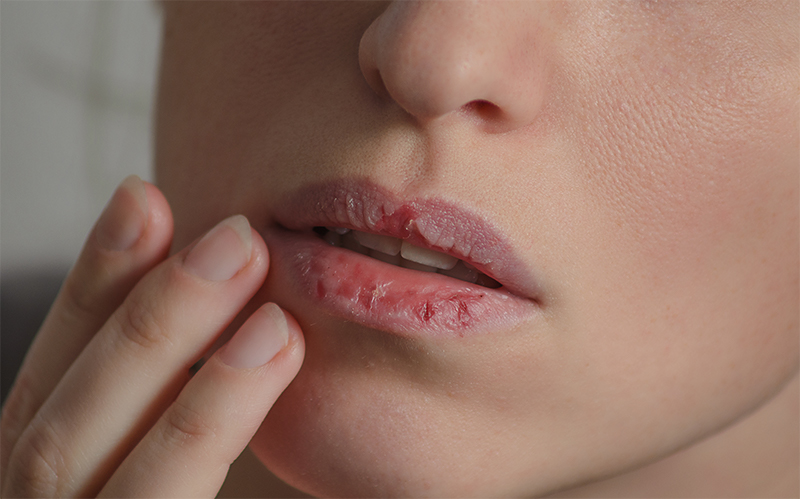
Risk factors of actinic keratosis
Chronic exposure to sunlight alters the cells that make up the majority of the epidermis, which can lead to AKs. People who have fair skin and light-colored hair and eyes are at greatest risk.Individuals who are immunosuppressed, either by cancer chemotherapy treatments or organ transplants, or who have an immunodeficiency disorder, are also considered high risk.


